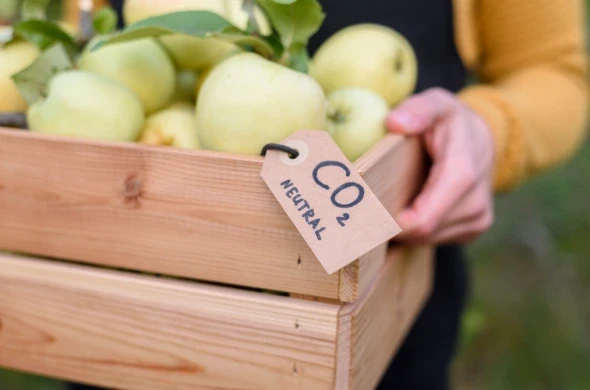Southeast Asia (SEA) is experiencing a population surge, expecting to reach 750 million by 2035 (a 12 percent increase from 2020). With the region’s high dependence on agriculture, focusing on food security through crop management is essential to protect social stability, support livelihoods, and drive economic growth.
As an experienced food and beverage consulting firm, we’ve put together a few key considerations to achieve food security in Southeast Asia.
Evaluating Crop Losses
Crop losses in Southeast Asia have become a growing concern, posing significant threats to the region's food security. Driven by various factors, including extreme weather events and pest infestations, crop losses disrupt the agricultural supply chain, reduce crop yields, and often lead to food shortages and price spikes.
These losses occur through various harvesting stages, and the need to adopt a unified approach to crop losses has become non-negotiable. Sustainable agricultural practices are essential to improve crop resilience, and effective disaster management strategies are necessary to mitigate these losses and ensure a more stable food supply in Southeast Asia.
Evaluating crop losses is the first step to managing food security, providing insight for policymakers and farmers to understand the extent of the problem and provide targeted strategies to mitigate losses.
Post-Harvest Losses Across the Value Chain
Crop losses occur at various stages throughout the harvesting process, impacted by factors such as extreme weather, inadequate storage facilities, improper handling, transportation inefficiencies, and pest infestations.
Key areas demanding attention include:
- Harvesting losses caused by rough handling and poor techniques
- Threshing losses where there is incomplete separation of grain from chaff, spillage, and exposure to moisture
- Drying losses where there is exposure to insects, contamination, or poor timing
- Storage losses as produce is stored in poor facilities, leading to exposure to moisture and the formation of mycotoxin
- Ineffective marketing efforts involving poor market access and infrastructure
- Transport losses where produce is improperly packaged or poor handling, leading to spillage and delays
An example of crop losses and their impact:
The warmer temperatures and prolonged drought during the last El Niño event from 2015-2016 led to an output decline of 15 million tonnes of rice (compared to the previous two years). The crop yield impacts food security and social stability. Consider that close to 200,000 rice and corn farmers in the Philippines were affected by the weather shift, leading to riots and an 11 percent drop in production. There was a global knock-on effect, with the global price of rice increasing by 16 percent compared to 2014.
The Contribution of Post-Harvest Crop Losses to Food Insecurity
In regions where food resources are already scarce, crop losses have a severe impact. Food prices rise, making it increasingly difficult for vulnerable populations to access sufficient and affordable nutrition.
For example, rice is a staple food in countries like Cambodia, but inadequate storage facilities and pest infestations can result in significant rice losses after the harvest. These crop losses not only affect the livelihoods of small-scale farmers but also lead to higher rice prices in local markets. As a result, many low-income households struggle to afford essential food items, contributing to food insecurity in the region.
Strategies for Addressing and Mitigating Post-Harvest Crop Losses
In Southeast Asia, where post-harvest crop losses pose a significant challenge to food security, tailored strategies for addressing and mitigating these losses are crucial.
Consider the following strategies and examples as a starting point.
- Modernized storage facilities: In countries like Vietnam, the government and non-governmental organizations have initiated programs to construct modern rice mills and storage facilities in rural areas to improve storage options, such as Hanh Phuc Rice, the largest paddy rice handling and storage facility in SEA.
- Enhanced transportation networks: Improving road infrastructure to and from remote regions facilitates the transportation of agricultural produce to urban centers.
- Farmer education and training: A survey on rice farmers in Cambodia reveals that insect pests are the most significant cause of yield loss, yet 77% of respondents misidentified a beneficial beetle as a pest, highlighting the need for education and training of local farmers.
- Integrated Pest Management (IPM): Thailand's Department of Agriculture promotes IPM practices among rice farmers, an initiative that encourages using biological pest control methods.
- Value addition and processing: In Malaysia, smallholder palm oil farmers are gaining certification to build the capacity of sustainable agriculture practices, increase yield, and improve market access.
Waste-Reduction Strategies at Different Value Chain Stages
Waste-reduction technologies are valuable tools for enhancing food security and preventing crop losses. Consider the following practical strategies to be exercised throughout the value chain.
- Create a well-defined baseline: Gather data on losses to establish a baseline that can be validated with field trials and focus groups to better understand the root causes of losses.
- Recognize value chain trends: Identify significant areas of inefficiency in the value chain and pinpoint suitable points for intervention. Compare these solutions against existing synergies to increase success.
- Secure support from stakeholders: Adopt an ecosystem approach, which includes engaging stakeholders throughout the value chain and addressing specific challenges to combat post-harvest crop losses effectively.
- Secure available resources: Leverage technology and educate farmers to create a resourceful and efficient workforce.
Considering the urgency of ensuring food security and promoting sustainability in the region, government agencies, technology providers, and agricultural organizations must leverage the tools and resources available to work towards food security.
Agribusiness Consultant for SEA
A consultant firm, such as Ollen Group, provides substantial value to the agricultural sector in Southeast Asia by offering expertise in product development, quality control, and market analysis — all contributing to the reduction of crop loss.
Our insights help farmers and agribusinesses diversify their product offerings, improve crop quality, and identify profitable market opportunities. Our consultants can also assist in implementing sustainable and innovative practices, which are increasingly important for meeting global food demand while preserving the environment.
Read our latest insights, ideas, and perspectives that explore the trends shaping the future of business and society. Our consultancy services go hand-in-hand with these insights, confirming our position as industry leaders. Get in touch to find out more about our consulting services and industry expertise, and discover how to make your supply chain more streamlined, efficient, and flexible.



